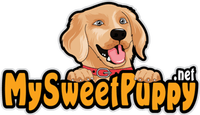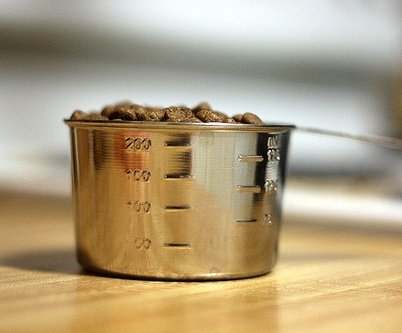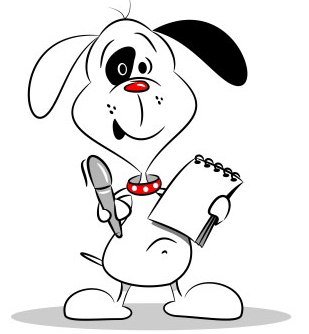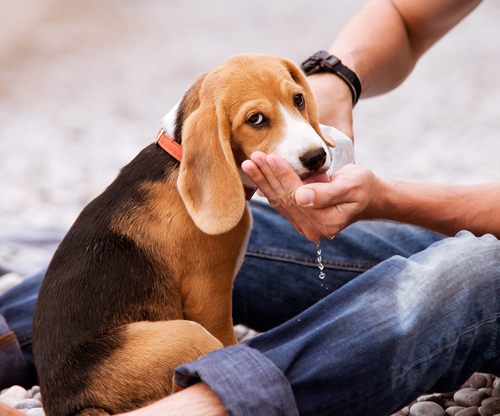The ASPCA estimates that nearly 70-80 million dogs and upwards of 96 million cats live in American homes. With a canine population so large, it’s no wonder that the pet food industry is worth over $24 billion.
With so many dogs and cats relying on the pet food industry for nutritious meals, it might be all too easy to assume the pet food ingredients on the big name or “recommended” brands are high-quality.
However, there may be more lurking in Fido’s food than we think. Explore the ten most dangerous ingredients in pet food, and crack the code of interpreting ingredient labels on pet food.
Contents
Info graphic
Carrageenan
Carrageenan is a common ingredient in dairy products, meats, baby formula, and – you guessed it – dog/puppy food. Carrageenan acts as a thickener and stabilizer in over 70% of canned dog foods in the market. Despite the fact it is sourced from red seaweed, carrageenan adds no nutritional value.
Why is it dangerous?
A 2009 study reported that carrageenan initiates inflammation in the intestines of animals.
The Cornucopia Institute echoes the dangers of carrageenan and reports that the inflammation caused by carrageenan is linked to several IBS cases in cats and dogs. Even food-grade carrageenan affects the digestive systems of pets.
Don’t be misled
Pet (and even human) foods labeled as organic potentitally still contain carrageenan, which makes searching for carageenan-free canned food difficult. Use dry food if necessary until you can locate a carrageenan-free wet version.
Ethoxycin
Monsanto manufactures ethoxycin as a preservative used to prevent the fat content of dog food from becoming rancid. Interestingly, this preservative is also used a pesticide in pear orchards.
Why is it dangerous?
While banned in the European Union, ethoxycin continues to cause health problems for pets in America. Side effects from consuming ethoxycin include:
- Liver damage
- Kidney damage
- Thyroid damage
- Allergic reactions
- Reproductive issues
- Leukemia
- Birth defects (if consumed while pregnant)
- Cancerous tumors
What is an alternative?
Look for pet food labels that list naturox, a combination of tocopherols, rather than ethoxycin. Use hypoallergenic dog foods without this ingredient.
BHT
Manufacturers in the food and beauty industries incorporate BHT, butylated hydroxytoluene, as a safeguard against rancidificaiton.
Why is it dangerous?
In 2011, Chemico-biological Interactions published the results of a study conducted by the Pharmaceutical Department of the University of Colorado which showed that BHT directly led to inflammation in the lungs and increased tumor growth, particuarly in the liver.
What is the alternative?
Choose a dog food that lists Vitamin E as a preservative instead of BHT.
Propylene glycol
Proplyene glycol, a preservative, is also included in canned dog food because it retains water, keeping the food moist.
Why is it dangerous?
The FDA prohibits the use of proplyene glycol in cat food because it damages red blood cells, yet it is still present in dog food. This preservative also causes intestinal blockage and lesions in the stomach.
What is the alternative?
Vitamin E, C, and flavinoids are natural antioxidants that will preserve the food without damaging your pet.
BHA (butylated hyroxyanisole)
Like ethoxycin, BHA is waxy solid used to keep the fat in pet food from turning rancid.
Why is it dangerous?
While the FDA contends that BHA is safe at low doses, the repetitous diet of dog food with BHA has a cumulative effect on the dog. The Office of Environmental Health Hazard Assessment of the state of California found that in lab studies, cancerous tumors consistently grew in the presence of BHA. BHA also halts the blood clotting process.
What is the alternative?
Purchase pet food that lists vitamin E as a perservative rather than BHA.
Food dyes
Industrial food production plants include food dyes in recipes for aesthetics. For example, green food dye is added to make spinach-flavored kibble green while orange food dye mimics the orange hue of carrots. No nutritional value is gained from the dyes.
Why is it dangerous?
Non-organic food dyes are chemically created, and it is these chemicals that cause problems for both dogs and humans alike. The number one complaint is hyperactivity. Consuming food dyed artificially also damages organs and increases the risk of cancer.
What is the alternative?
When scanning labels, look for food dyes that are naturally sourced. For example, beet juice is a natural substitute for Red Dye 40 while annatto is frequently used to replace artificial orange dyes.
Corn syrup / Corn
Corn (among other grains) is used as a filler in both cat and dog food while corn syrup sweetens the food, making it more palatable.
Why is it dangerous?
- Corn: Cats and dogs tolerate grains, but meat should compromise the majority of pet food because cats and dogs are carnivores. Corn and grain byproducts become unhealthy additions because there is little quality control over these ingredients. Like the meat byproducts, the “corn” in pet food is not held to the same standards of human consumption and therefore can be moldy or otherwise inedible. The presence of mold creates mycotoxins, which is the number one cause of pet food recalls.
- Corn syrup: Consuming food on a daily basis with corn syrup leads to weight gain and diabetes. Because so many foods contain corn syrup, it’ s no suprise that nearly one in 400-500 dogs are diabetic.
What is the alternative?
Be diligent about purchasing grain-free pet foods. Avoid foods and treats that contain corn syrup.
Byproducts
Rendered meat byproducts consist of waste products from the food industry. Livestock that died of disease or age, expired grocery store meats, and remnants left over from restaurants are three examples of waste products present in byproducts. Byproducts that do not specifically list which animal the waste came from is likely to contain beaks, bones, feet, or other organs from a mix of animal species.
Why is it dangerous?
Because pet food companies include diseased animals and condemned animal parts in byproducts, there is a high risk for toxic ingredients including:
- Traces of the euthanasia drug
- Fungus
- Bacterial pathogens
- Free radicals
What is an alternative?
Pet food manufacturers list byproducts as animal fat, blood meal, or meat and bone meal on the nutrition labels. Search for pet foods that clearly mark “No filler or animal byproducts.”
Xylitol
Xylitol, a sugar alcohol, is a commonly used sweetener in sugar-free products such as gum, candy, and toothpaste. Xylitol exists naturally in fruits and vegetables; however, xylitol extracted for use in food and oral health products is derived from corn cobs.
Why is it dangerous?
It is well known that xylitol caused hypoglycemia, low blood sugar, in dogs. However, a recent study by the ASPCA indicated that severe liver damage is associated with xylitol consumption. Because xylitol is becoming more present in human foods and snacks, it is even easier for a dog to ingest xylitol. Never feed human desserts to your dog, especially if it may contain this sweetener.
What is the alternative?
Out of precaution, consider creating a xylitol-free home.
Sorbitol
Like xylitol, sorbitol is a sugar alcohol extracted from corn (in this case, cornstarch). Sorbitol has also been prescribed for humans as a laxative or as an ingredient in a laxative.
Why is it dangerous?
Apart from causing diarrhea in dogs, sorbitol can cause dogs to enter into a vicious cycle of hyperactivity followed by exhaustion.
What is the alternative?
Avoid any pet foods with sorbitol listed as an ingredient. Be cautious of giving a dog any table scraps containing sorbitol.
How do you know if your dog has been affected by these ingredients?
If you suspect your dog has ingested any food containing these ingredients, keep a journal of any suspicious symptoms and contact your dog’s veterinarian. Symptoms to watch for include:
- Increased thirst
- Increased urination
- Extreme fatigue and weakness
- Swelling anywhere on the body
- Jaundice
- Indigestion
- Stomach pain
While there are certainly more quality controls and guidelines governing what ingredients can be included in organic foods and treats, just because a product is labeled “organic” doesn’t mean that it is free from these harmful ingredients.
For instance, many organic products still contain carrageenan. Even more confusing is the “Made with Organic” label, which really means that only some ingredients are organic.
The bottom line: Decode the labels. The time and effort (and money) that you spend on the right pet food will be worth your dog’s health and happiness.
Sources
https://www.statista.com/topics/1369/pet-food/
http://www.aspca.org/animal-homelessness/shelter-intake-and-surrender/pet-statistics
http://www.cornucopia.org/wp-content/uploads/2015/11/DecodingPetFoodfullreport.pdf
http://www.ncbi.nlm.nih.gov/pubmed/19864123
https://en.wikipedia.org/wiki/Ethoxyquin
https://www.citeab.com/publication/31872-21536018-protein-damage-from-electrophiles-and-oxidants-in-l
http://www.aspcapro.org/sites/pro/files/xylitol.pdf
https://www.sugar.org/other-sweeteners/sugar-alcohols/

I have lived in big cities my entire life. Having grown up on the Upper East Side in Manhattan, my early life was an exciting one, filled to the brim with interesting encounters and opportunities popping up at every street corner. Like many city people, my passion for dogs first started when my parents decided to bring a puppy into the household. For them, it was a way of getting me to spend less time at his computer or wandering aimlessly around the city with my friends. Little did they know that bringing a Labrador Retriever into their apartment would determine not only the course of their son’s professional career but also my love life.
Having obtained a Computer Science Bachelor’s degree from Fordham University, I went on to pursue an IT career in the Big Apple. After a few years of doing basic cybersecurity and tech support work in various offices around Manhattan, I decided to leave New York and look for my calling in Boston, Massachusetts. There, I got a Master’s degree in Computer Science with a specialization in Web Development. As a means of supporting myself through college, he found a salesman job at a local paper company, where he met Mary, the love of my life and the person I’d end up creating My Sweet Puppy with.





Thanks for connecting to Mysweetpuppy.net. Please keep in mind that I, Claudia Bensimoun, do not write any of the blogs or reviews on this website, nor have I in the past. I only answer the comments section.
Puppies and dogs need a high-quality diet.General ingredients that include whole meats, fruits or vegetables in their top 5 ingredients are considered good foods. Those that also incorporate antioxidants like blueberries, cranberries, pomegranates and pumpkin are also becoming popular. With that said, organic, natural and preservative- free with no artificial ingredients, are also key to a well- balanced, and high quality dog food.Vitamins and amino acids should not be synthetic, and organic should mean that all of the ingredients are organic, including vitamins and minerals, and not just a few. A well-balanced dog food should use real meat as its first ingredient. Opt for these tips when choosing puppy food.
• healthy ingredients
• fresh meat
• vegetables and fruit
• no controversial ingredients
• no added hormones and steroids
• no unnamed meat sources
• right ratio of macronutrients
• by-products in the form of organ meats
• not overly processed
It should also not use harmful preservatives, flavors or artificial colors.Even if you’ve been feeding your pet the same dog food for years, you’ll probably not notice the changes, like using chicken meal instead of whole chicken, or changes in the type of carbohydrates used. This could affect your pet in many ways, triggering allergies and sensitivities that he or she may have never had before. Protein percentages can also drop when formulas are changed. This happens often, and does affect the quality of the food. The addition of cellulase and cellulose as fillers can be problematic. For those unaware, cellulase breaks down cellulose. Many dogs have problems with both because it causes digestive problems.Lastly, always read the ingredients list and don’t purchase dog food formulas without knowing what your dog will be consuming first. Most dangerous are the ingredients mentioned in the blog. Consult with your veterinarian for expert advice. In the end, feeding a high-quality dog food formula will help your pooch live a longer life.
All about dog food talk!
That said,puppies and dogs may need emergency veterinary treatment, so it’s important to examine the many benefits of having good pet insurance. Emergencies tend to happen out of the blue when you least expect it. For pet insurance tips, visit:https://wordpress.com/block-editor/post/booksforever1blog.wordpress.com/6218
What should I look for when im buying dog food ?
Is garlic toxic? What happens if they eat it whys it toxic and what are symptoms of a dog having a reaction to garlic. Thx
Thanks for connecting to Mysweetpuppy.net. Please keep in mind that I, Claudia Bensimoun, do not write any of the blogs or reviews on this website, nor have I in the past. I only answer the comments section.I am in no way connected to the content written within this website, most especially the German Shepherd blog. This website hires other writers for their blogs.Please do not contact me regarding website content. I only write content within the comments section.arlic and onions can cause hemolytic anemia if fed in large amounts to dogs. Smaller quantities of garlic are often found in dog treats, and are fine for dogs. Onions should be avoided since they are more potent. Avoid feeding your dog any broths that have cooked onions or are infused with onions. Food allergies may lead to inflammation of the stomach lining and intestines.
Vomiting will usually occur within an hour or two. Hemolytic anemia happens when red blood cells are destroyed. Your veterinarian needs to be consulted if your dog has consumed even small amounts of onion. Dogs that suffer from anemia or lupus should not be fed garlic. Pups should also not consume garlic.
Consult with your veterinarian for the best nutritional advice.
How can I tell if my dog treats have dangerous ingredients?
Thanks for connecting to Mysweetpuppy.net. Please keep in mind that I, Claudia Bensimoun, do not write any of the blogs or reviews on this website, nor have I in the past. I only answer the comments section.
I am in no way connected to the content written within this website, most especially the German Shepherd blog. This website hires other writers for their blogs.Please do not contact me regarding website content. I only write content within the comments section.
The 10 Most Dangerous Ingredients in Pet Food Blog in Mysweetpuppy.net discusses dangerous ingredients in your puppy dog food. With this in mind, Mysweetpuppy.net shows you how to check your puppy treats for dangerous ingredients.
Consider these points before purchasing treats for your puppy:
.Opt for puppy treats that are crafted with real animal protein, vegetables,fruits,and supplements.
.Plant- based protein for all vegan-friendly puppies and dogs are also healthy
.Avoid meat-by products on the ingredients list
.Vegetable proteins with chia and quinoa yield high levels of protein and vitamins. Puppy formulas will offer a higher protein level because puppies need more protein.
.Freeze – dried treats are good.
.Raw dog food treats like green tripe patties contain probiotics, essential fatty acids, minerals, and vitamins. Best for adult dogs.
.Opt for no hormones, all-natural, no preservatives, no colors
.Look for treats with kelp,spirulina,turmeric, fish, (no raw fish) and fruits and veggies like mango and sweet potatoes
.Added probiotics are beneficial
.Opt for low-calorie puppy and dog treats
.Avoid puppy and dog treats that are sourced or manufactured in China.
.Avoid artificial sweeteners that are in nut and seed butters, and that may have been added to the puppy treats.
.Opt for natural flavors like sweet potato and pumpkin.
The most important advice when choosing puppy treats or puppy and dog formulas is to read all the ingredients. How to find the best puppy or dog treats will depend on the first five ingredients in the puppy or dog treats. Providing your puppy or dog with the most appropriate diet that is healthy and beneficial to his life stage, will help you give your pooch a long and healthy life!
The FDA Regulation of Pet Food States The Following:
“There is no requirement that pet food products have pre-market approval by the FDA. However, FDA ensures that the ingredients used in pet food are safe and have an appropriate function in the pet food. Many ingredients such as meat, poultry and grains are considered safe and do not require pre-market approval. Other substances such as sources of minerals, vitamins or other nutrients, flavorings, preservatives, or processing aids may be generally recognized as safe (GRAS) for an intended use (21 CFR 582 and 584) or must have approval as food additives (21 CFR 570, 571 and 573). Colorings must have approvals for that use as specified in 21 CFR 70 and be listed in Parts 73, 74, or 81.” or more information, visit:https://www.fda.gov/AnimalVeterinary/ResourcesforYou/AnimalHealthLiteracy/ucm047111.htm
For my article and interview with Olympian freestyle skier about puppy rescue, Gus Kenworthy, visit:https://www.fidofriendly.com/article/from-russia-with-love